What is the best mesh Wi-Fi system overall?
The farther away you get from your router, the weaker your internet connection tends to be, but there’s a fix to it. The best mesh routers can help with better internet coverage in terms of area. For most homes, our top pick is the TP-Link Deco W7200, a two-piece mesh system that offers excellent performance for around $200. Many other top-tier mesh routers are worth considering, and we’ve spent years testing them out to find the best systems of the bunch.
We’ve still got lots of routers and mesh systems we’d like to try out, the majority of which use Wi-Fi 6 technology, promising better performance and faster speeds. Shop around and you’ll find mesh routers from Eero, Nest, Netgear Orbi, Linksys and others that support Wi-Fi 6E, which means they can also access a newly unlocked mass of fresh bandwidth in the 6GHz band. In 2024, we’re expecting to see lots of new systems that support Wi-Fi 7, which promises to make even better use of that 6GHz band for smoother, faster connections. A few of those systems, including the Netgear Orbi 970 series and the Eero Max 7 are already available for purchase (more on those a little further down the post).
Expect regular updates to this post as new Wi-Fi mesh routers like those make it to market. For now, here are our picks for the top-tested systems you should be considering first if you’re shopping for the best mesh Wi-Fi system options available now.
Best mesh routers
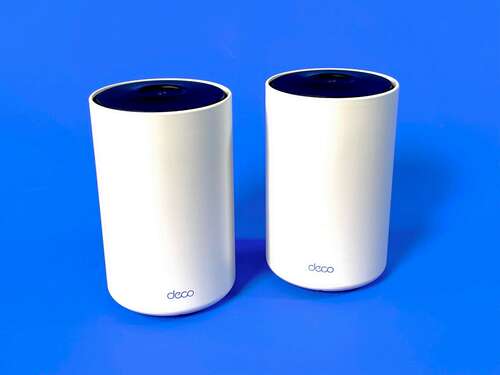
For a mesh router upgrade that really feels like an upgrade, you’ll want to look for these things: Wi-Fi 6 support and a tri-band design with the usual 2.4 and 5GHz bands. You’ll also want a second 5GHz band that the system can use as a dedicated backhaul connection for wireless transmissions between the main router and the satellites. The problem is that tri-band Wi-Fi 6 mesh routers like that are typically expensive. Not too long ago, I commended Asus and Eero for bringing the cost of a two-piece system like that down to around $400.
Now, TP-Link is doing even better and selling the Deco W7200 mesh router, a tri-band Wi-Fi 6 system that costs only $209 for a two-pack. That’s an excellent value, and the even better part is that it performs like a champ, with fast, stable speeds and decent range. In addition, the setup process is about as easy as it gets, with satellite extenders that automatically join the mesh as soon as you plug them in.
All of that makes the Deco W7200 an outstanding value and the first mesh router I’d point people to if they asked for a recommendation. Just know that it’s been in and out of stock this year on Walmart’s website, so it might not be immediately available in your area. If it isn’t, you could also consider stepping up to the TP-Link Deco XE75, a similar system that adds Wi-Fi 6E support at $230 for a two-pack. The TP-Link Deco X90, a Wi-Fi 6 mesh system, outperformed the W7200 in my tests and adds in a multi-gig Ethernet jack for high-speed internet plans. It typically sells for $450 for a two-pack, but you can currently find it on sale for around $300.
…Read more

Eero 6 Plus
A great three-piece setup for large homes
Eero was an early pioneer of the mesh networking approach, and in 2019, it got scooped up by Amazon. Then, in 2020, we got two new versions of the Eero mesh router: the Eero 6 and Eero Pro 6, both of which add support for Wi-Fi 6.
I liked the Eero Pro 6 as an upgrade pick, but the standard Eero 6 wasn’t quite strong enough for me to recommend it. Flash forward to the release of the Eero 6 Plus. With a list price of $195 for a three-pack, it offers the same strong pitch as the Eero 6 — a relatively affordable and easy-to-use three-piece Wi-Fi 6 mesh setup, complete with a built-in Zigbee radio for connecting things like lights and locks with your network. Best of all, with a faster AX3000 design (up from AX1800 with the Eero 6) and support for full-width, 160MHz channels (up from 80MHz), the performance is significantly improved.
In my at-home tests, the Eero 6 Plus returned average download speeds that were in the top 10 of the 30 or so mesh routers I’ve reviewed here, and none of the systems that outperformed it offer as good a value. Its upload speeds were strong as well, and it works great with previous-gen, Wi-Fi 5 client devices, too; that’s important because gadgets like those still comprise the majority of Wi-Fi devices in our homes. With three mesh devices for $195 and a range of up to 4,500 square feet, it’s an excellent pick for large homes, where that additional extender will come in handy.
…Read more
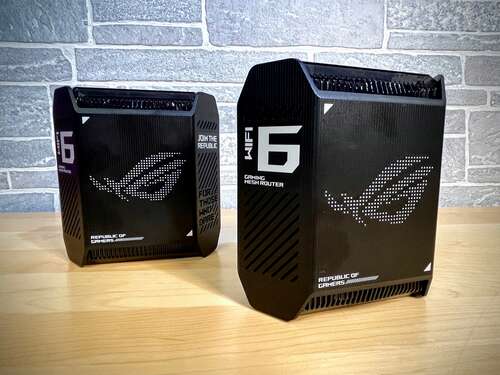
Looking for the fastest mesh router on the list? Look no further; it’s the Asus ROG Rapture GT6, a Wi-Fi 6 mesh gaming router that costs about $450 for a two-pack. In our controlled speed tests on a gigabit network, the GT6 finished with an overall average download speed across all distances of 809Mbps, along with an equally impressive average upload speed of 785Mbps. Nothing else we’ve tested has delivered speeds as fast as that, not even fancy Wi-Fi 6E systems that cost even more.
The key factor setting this mesh router apart (aside from the admittedly gamer-centric design) is the fact that it supports recently opened UNII-4 spectra at 5.9GHz, which means that it can tap into some additional bandwidth on the 5GHz band to move your Wi-Fi traffic through a total of three full-width 160MHz channels. As a result, you’ll experience faster speeds that do a better job of holding up at range.
Beyond that, the GT6 features an excellent suite of features that won’t cost you an additional subscription fee, including VPN access, a quality of service engine for prioritizing specific types of web traffic over others, an optional Instant Guard app that can pipe your web traffic back through your home network like a VPN whenever you’re on a public Wi-Fi network, a mobile gaming boost mode, parental controls, threat scans and more. Yes, that dot matrix-style ROG logo on the front of each device is also fully configurable to shine in any color you like. The system also features multi-gig Ethernet WAN ports on each device that can accept incoming wired speeds as high as 2.5Gbps, which makes it a very good pick for a multi-gig internet plan.
The GT6 isn’t cheap, and its ostentatious design (available in your choice of black or white) may not be for everyone. Still, it’s a justifiable splurge if you’re just looking for elite Wi-Fi performance at home, and a no-brainer upgrade pick if you ever catch the system on sale.
…Read more
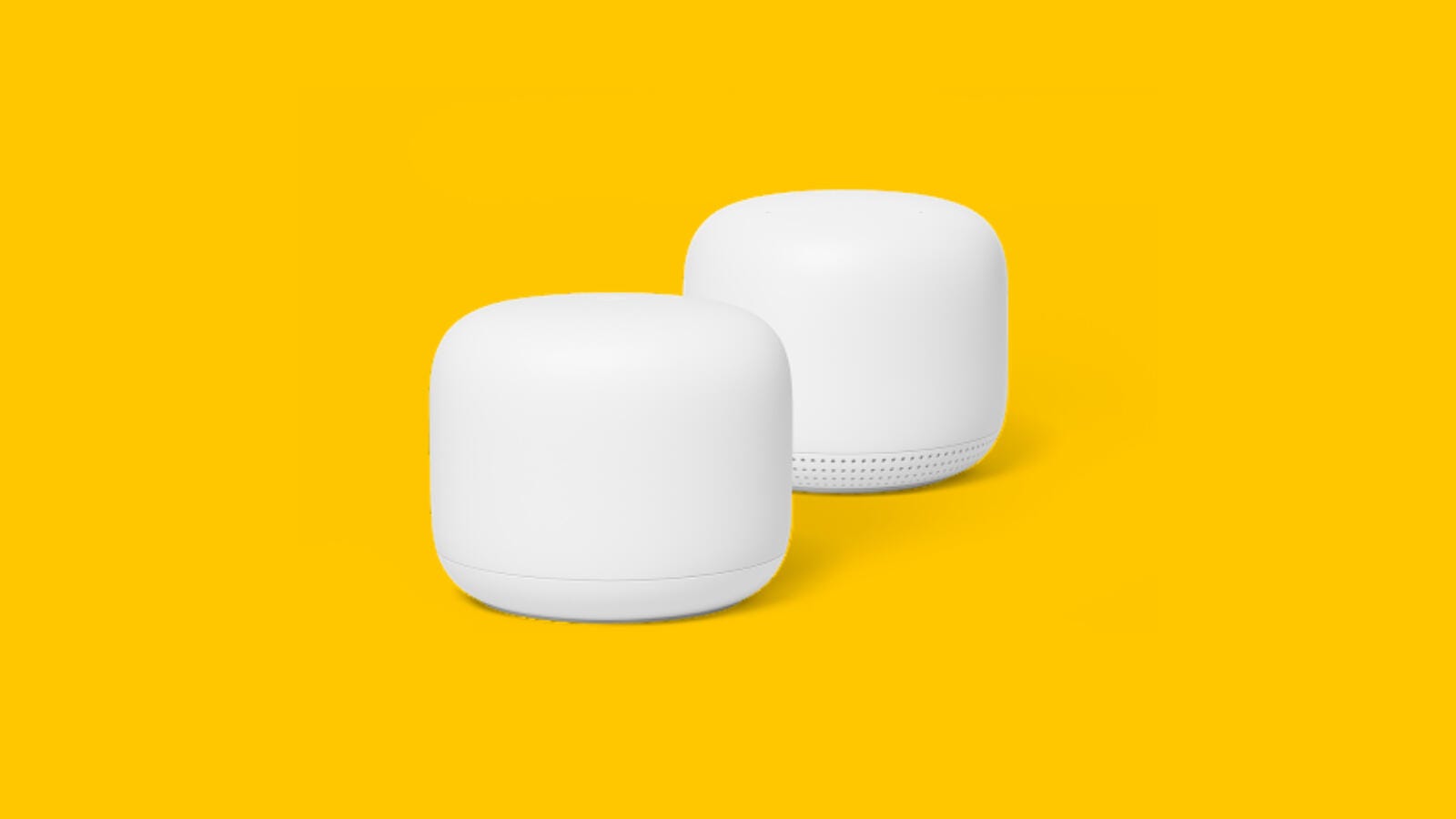
Nest Wifi
A solid Wi-Fi 5 system
(but don’t spend more than $200)
Several years ago, Google Wifi became a breakout hit thanks to its easy setup and its ability to spread a fast, reliable Wi-Fi connection throughout your home for all of your connected devices. Then, there was Nest Wifi, a second-gen follow-up that adds in faster internet speeds and a better-looking design, plus Google Assistant smart speakers built into each satellite extender. It was an immediate standout in our tests, and our top-recommended mesh router prior to the arrival of Wi-Fi 6.
There’s now a new, third-gen follow-up called Nest Wifi Pro that adds support for Wi-Fi 6E. That system failed to wow us, and in the meantime, the second-gen Nest Wifi is still a solid mesh router that frequently costs a lot less than before.
On average, the Nest Wifi notched the fastest top speeds that I saw in my tests from any Wi-Fi 5 mesh router (and faster speeds than some of the Wi-Fi 6 systems I’ve tested, too). It also aced our mesh tests, never once dropping my connection as I moved about my home running speed tests. I never caught it routing my connection through the extender when connecting directly to the router was faster, either, which is a common pitfall for mesh connections.
Make no mistake, the lack of Wi-Fi 6 support means that the second-gen Nest Wifi is a somewhat dated system at this point, but it does include support for modern features like WPA3 security, device grouping and prioritization, and 4×4 MU-MIMO connections that offer faster aggregate speeds for devices like the MacBook Pro that can use multiple Wi-Fi antennas at once. It’s also fully backward-compatible with previous-gen Google Wifi setups, which is a smart touch. All of it is easy to set up, easy to use and easy to rely on. Among dual-band mesh routers, I’d much rather have a top-of-the-line Wi-Fi 5 system than an entry-level Wi-Fi 6 system, and even among the new competition, the Nest Wifi mesh router fits that bill.
…Read more
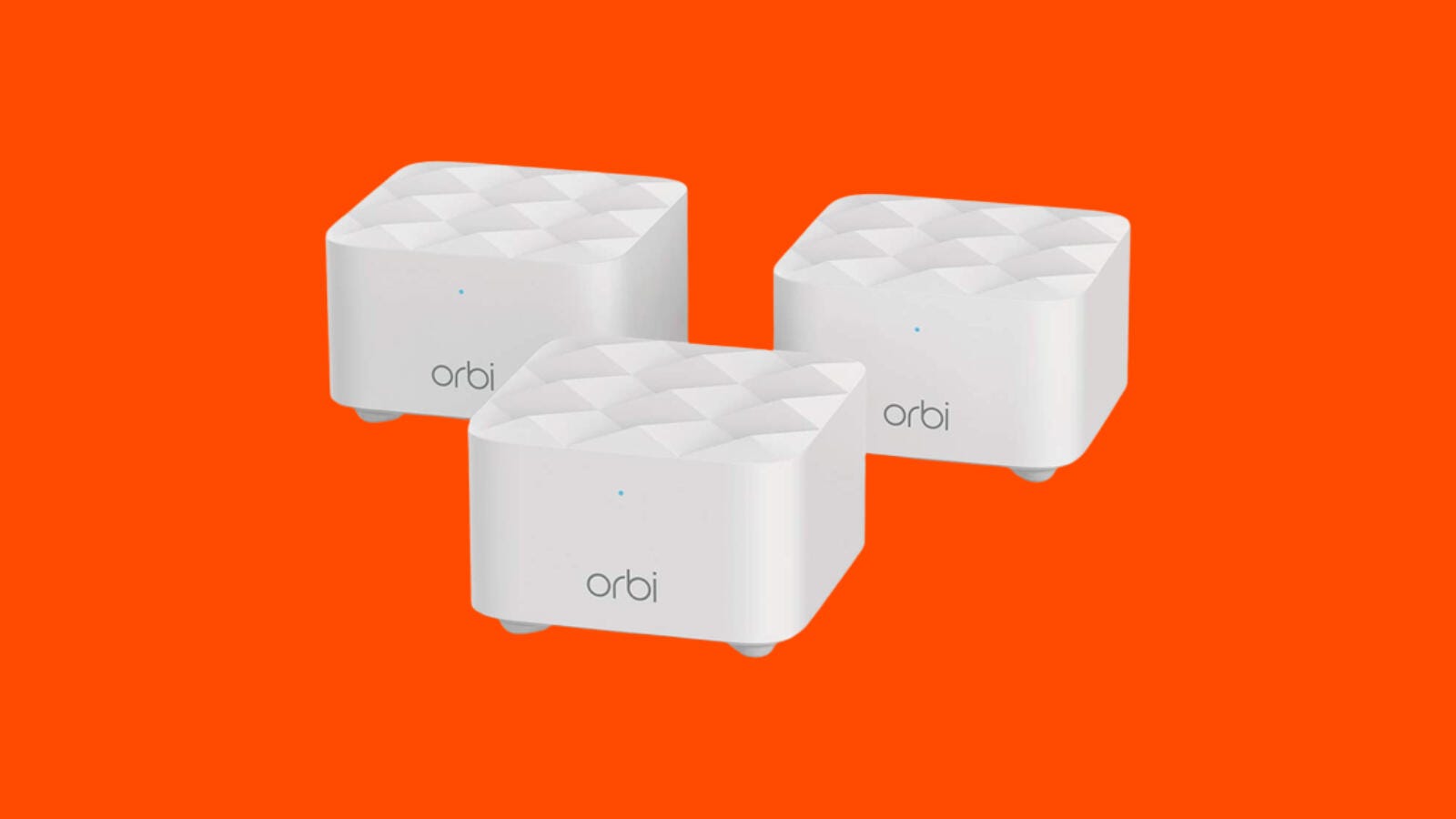
The AC1200 version of Netgear Orbi is a smaller, simpler version of the popular mesh system. It doesn’t offer blazing-fast speeds, but the performance is consistent and it costs a lot less than other, fancier Orbi builds.
Netgear brought the cost down by sticking with Wi-Fi 5, ditching the built-in Alexa speaker that comes with the Orbi Voice and skipping the tri-band approach and the dedicated 5GHz backhaul band that other Orbi systems use to connect each device in the mesh. I wonder if Netgear missed an opportunity by not branding this system as “Orbi Lite.”
It all makes for a less robust mesh system than other Orbi setups, but I hardly noticed in my tests. Among the Wi-Fi 5 systems I’ve tested, the dual-band Netgear Orbi actually notched the fastest top speeds at close range, it kept up with the Nest and Eero in our real-world speed tests and it offered excellent signal strength in the large-sized CNET Smart Home. Netgear has a great reputation for performance — it received the top overall score in the American Customer Satisfaction Index’s 2023 survey for Wi-Fi equipment.
Netgear’s app isn’t as clean or intuitive as Nest’s or Eero’s, and the network didn’t seem quite as steady as those two as it steered me from band to band in my tests, but those are quibbles at this price. If you just want something affordable — perhaps to tide you over until you’re ready to make the upgrade to Wi-Fi 6 or Wi-Fi 6E — the most budget-friendly Netgear Orbi definitely deserves your consideration. We’ve regularly seen the three-piece system selling for about $100 over the past year or two, so try and score it at that price if you can.
…Read more
CNET editors pick the products and services we write about based on editorial merit. When you buy through our links, we may get a commission. Read more about how we test mesh routers.
When do you need a mesh Wi-Fi system?
Why does mesh Wi-Fi matter? Between working from home, gaming online, video chatting and streaming shows and movies, there are plenty of reasons to want a fast, reliable Wi-Fi signal throughout the entirety of your home.
With multiple devices spread throughout your home, a mesh router is like a team of routers that can relay your wireless traffic back to the modem better than a traditional router. They’re particularly good fits for large or multistory homes where your Wi-Fi network has a lot of ground that it needs to cover — and walls to travel through — but they can also help boost speeds at range in small- or medium-size homes. And in 2024, there are lots of new, next-gen options on the market, so it’s a good time to make the switch.

Watch this: Best Wi-Fi Routers for 2023: A Buying Guide
Some of the most consistent mesh router performance we’ve seen in our tests comes from systems from Eero, which popularized mesh networking before being bought by Amazon in 2019, as well as the latest setups from the TP-Link Deco, Asus ZenWiFi, Netgear Orbi and Google Nest product lines. Mesh systems regularly sold for as much as $500 a few years ago, but now these manufacturers offer multipoint mesh router systems — including the main router and the additional satellite extenders — for closer to $200. Though we’d recommend aiming a bit higher, you can even find basic, entry-level mesh systems for as little as $40 per device that can provide a strong Wi-Fi signal throughout your entire home.
Here’s how we speed test mesh routers
Router manufacturers make big claims about top speeds, many of which can be misleading or at least confusing when you’re shopping for a new one. That’s why we put every router we review through our own, independent speed tests in a real-world test environment. For much of the past few years of working from home, that test environment has been my house, but in 2024, CNET has been working to relocate those tests to our test lab, where we can do more to control for variables in the environment.
Specifically, we’ve set up a five-room, 1,300-square-foot test space for home networking tests, with incoming gigabit internet speeds (940Mbps downloads, 880Mbps uploads). It’s not as big as the multi-bedroom, multistory homes where mesh routers really shine, but it’s still enough space to see a separation between the top mesh systems on the market.
To get there, we set each mesh system up in the same locations within the environment, and then we started running Wi-Fi speed tests across each of the five rooms. That includes tests during morning, afternoon and evening hours, and tests to a variety of client devices, including both Wi-Fi 6 and Wi-Fi 6E devices. For half of my tests, I start by connecting in the same room as the router and then work away from it — for the other half, I start by connecting at the farthest point from the router and then work towards it. In the end, I average it all together to get a good, comprehensive look at how each system performs.
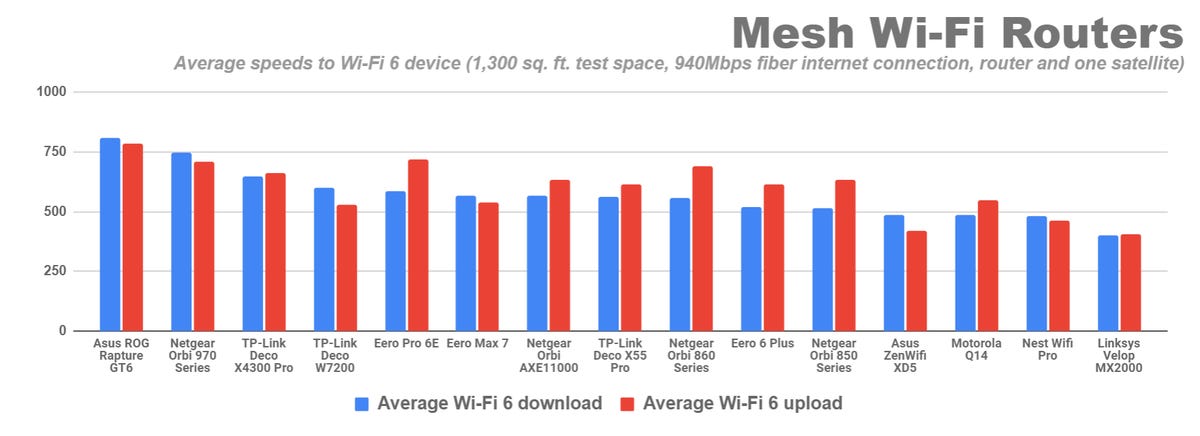
You can see those results for yourself in the bar graph above, which shows the overall average Wi-Fi 6 upload and download speeds for each system we’ve tested. We’re still working to re-test the top-rated systems from previous years alongside new systems as they come out, so you can expect regular updates to this post whenever I’ve got new data to share.
For now, the system that kept my Wi-Fi 6 downloads the highest was our top performance pick, the Asus ROG Rapture GT6. Right behind it is the Netgear Orbi 970 Series — it’s the most expensive mesh router I’ve tested to date, and one of the first I’ve tested that supports Wi-Fi 7, but for these tests, remember that I’m using a Wi-Fi 6 device. In third place is the TP-Link Deco X4300 Pro, followed closely by our top recommended system for most homes, the affordable TP-Link Deco W7200. At this point, it’s been a performance standout across multiple rounds of exhaustive speed tests in multiple locations against dozens of competitors. It’s always been right at the top of the pack in terms of speeds and reliability, so it remains my top overall recommendation among Wi-Fi 6 mesh systems, especially considering that it isn’t too expensive at $209 for a two-pack.
Top picks aside, some interesting new competition has entered the scene in the last year or two. Most notable are two of the newest mesh systems from Amazon, the Eero 6 Plus and the Eero Pro 6E. Like the Deco W7200, each of those systems has held up well across multiple rounds of speed tests, with demonstrably stronger speeds than previous-gen Eero devices. In fact, the Eero Pro 6E actually notched faster average speeds to my Wi-Fi laptop than the brand new Eero Max 7 did, though that was largely due to the fact that it offered steadier, more consistent performance. The 6 Plus and Pro 6E offer a similar level of performance to Wi-Fi 6 devices, so the less expensive Eero 6 Plus is probably the better pick for most homes at $300 for a three-pack (or less, if you can catch one of Amazon’s frequent sales).
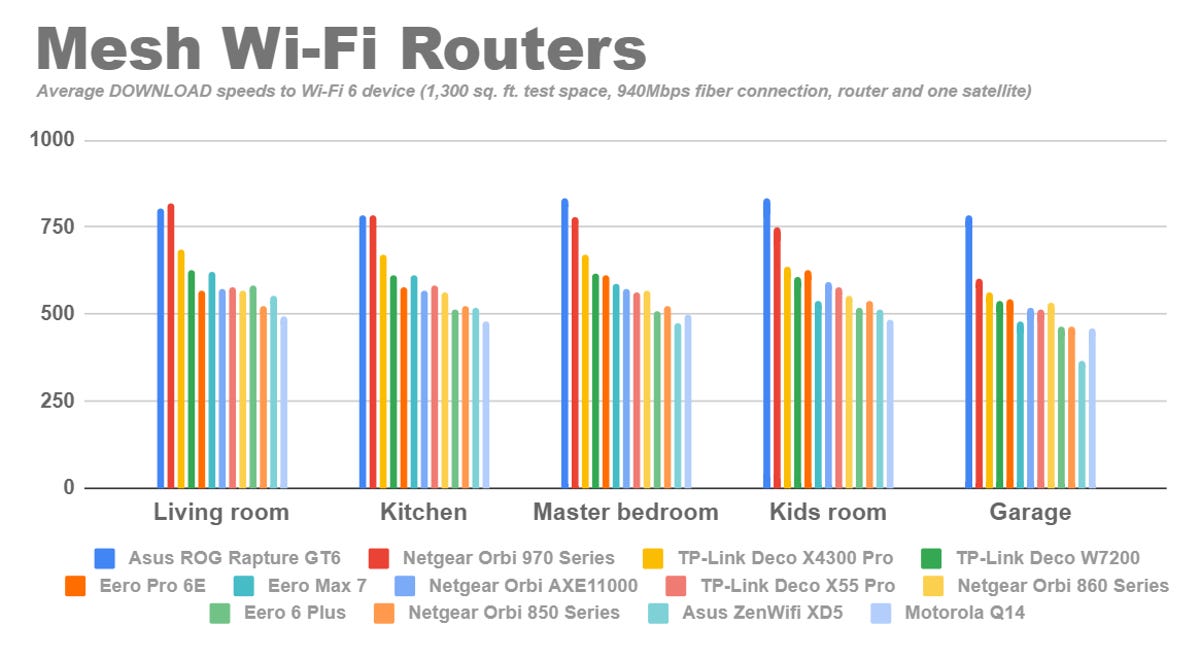
That said, if you’re starting to use devices at home that support Wi-Fi 6E, then the Eero Pro 6E might be worth the extra expense, as it adds in access to the 6GHz band to deliver faster speeds to devices like those. I re-ran my speed tests on a Wi-Fi 6E test device capable of connecting over 6GHz and the only Wi-Fi 6E system that returned faster speeds than the Eero Pro 6E was the AXE11000 version of the Netgear Orbi, which costs a whopping $1,499 for a three-pack. From a performance standpoint, it’s our top-tested Wi-Fi 6E system — but the Eero Pro 6E is right behind it and costs less than half as much at $550 for a three-pack or less. Just note that the system that finished in first place in these 6E tests was, again, the Asus ROG Rapture GT6, which isn’t a Wi-Fi 6E router at all, but rather, a super speedy Wi-Fi 6 router.
On the Wi-Fi 6E front, I was less impressed with the speeds I saw from the Motorola Q14 and from the Nest Wifi Pro, both to my Wi-Fi 6 and Wi-Fi 6E test devices. Both were workable systems that did the job in my tests — but with 6GHz speeds that fell short of Eero and Netgear, neither system offers a noticeable speed upgrade over the competition, and that makes them harder to recommend. Still, give Nest Wifi Pro some credit for stable speeds, strong smart home chops and good value at $395 for a three-pack.
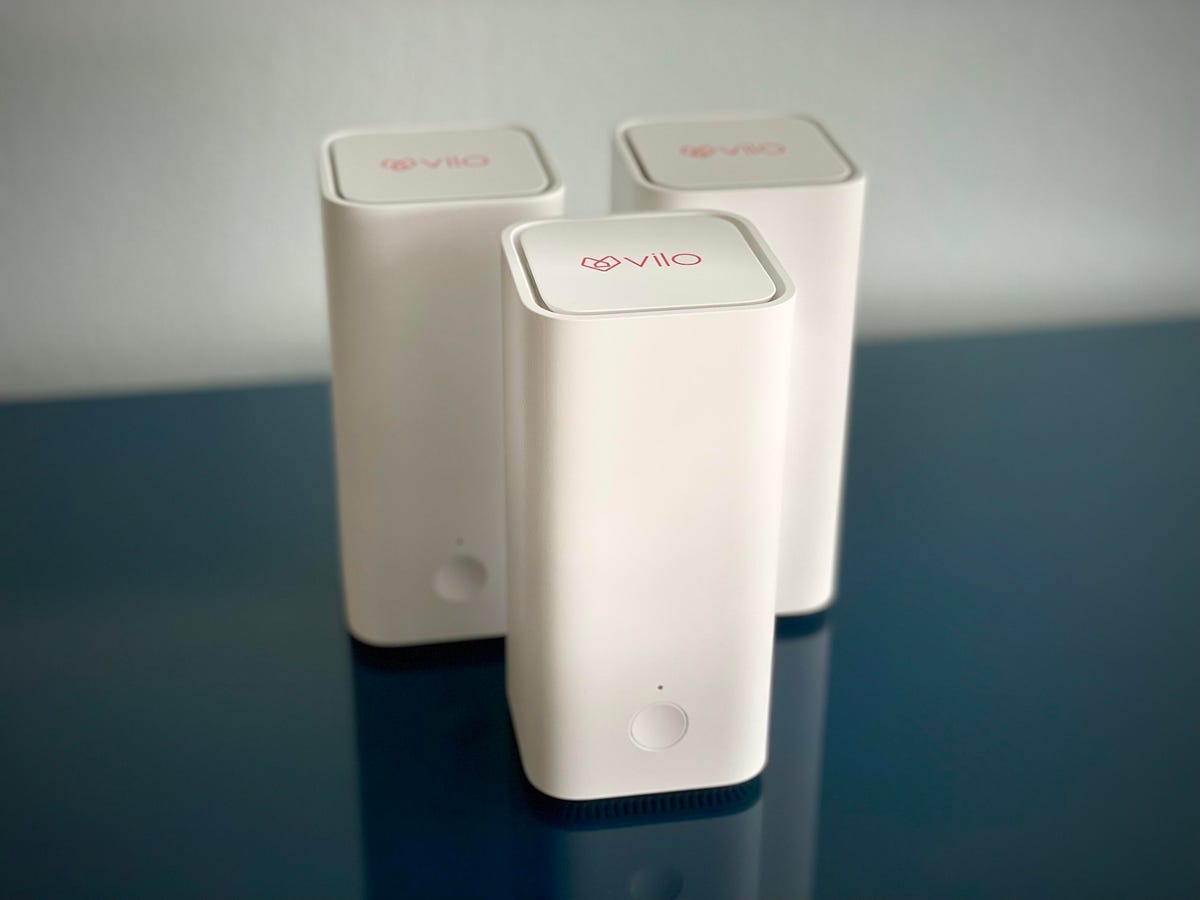
The Vilo mesh router is the slowest I’ve ever tested, but it’s functional, and it only costs $20 per device, plus shipping.
If you’re living with a slow ISP connection and you don’t need Wi-Fi 6, Wi-Fi 6E, or a fancy tri-band build, then there’s nothing wrong with skipping those upgrades and going with something simpler to save some money. I’ve tested a number of bargain picks like that in recent years; among them, the AC1200 version of the Netgear Orbi — currently available in a three-pack for under $120 — is my top recommendation, with the right balance of performance and value.
If you want to get dirt cheap, you could opt for something like the Vilo system, which costs around $40 per device, plus shipping. It’s the slowest mesh router I’ve ever tested, which wasn’t surprising, but it was still functional and able to maintain workable average download speeds at range.
Other mesh routers we’ve tested
We test lots of routers at CNET HQ — mesh and otherwise — so we’re constantly updating our rundowns of the top systems on the market. I’ll note any new mesh systems we test here as we go, along with a quick summary of my takeaways. Please note that this list includes several systems that were tested at my home during the pandemic, and not in our latest test setup.
Amplifi Alien: An early Wi-Fi 6 mesh system, the Amplifi Alien sports an attractive, gamer-friendly design, complete with touchscreen controls on the main router. At $380 for a single device, it’s a bit overpriced, but the unique build and the focus on advanced features should keep it on the radar for some.
Arris Surfboard Max AX6600: Another high-powered Wi-Fi 6 system with an upright, cylindrical design, the Surfboard Max Pro was able to deliver fast speeds to other Wi-Fi 6 devices in my tests, but the performance was inconsistent with earlier-gen Wi-Fi 5 devices. I also didn’t like the Ethernet jacks on the bottom of the device, which force you to bend your cables to the extreme in order to plug the router in.
Asus ZenWifi XD5: The ZenWifi XD6 is close to the Eero 6 Plus in both specs and price and at $300 for a three-pack, it’s one of the more affordable Wi-Fi 6 devices you’ll find. Its performance was less consistent across the home. In the garage, I only got 284Mbps upload speeds with the XD5 compared to 494Mbps in the living room, while the Eero 6 Plus returned 706 and 486Mbps for the same price.
Asus ZenWifi XD6: The middle child from the Asus family of Wi-Fi 6 mesh routers, the ZenWifi XD6 is a dual-band mesh system. It won’t give you the tri-band build of the ZenWifi XT8, nor will you get that system’s multi-gig Ethernet jack. Still, the system performed as well as any dual-band mesh router I had ever tested when I first reviewed it, so it isn’t a bad pick by any stretch. At less than $400, it’s a decent price for a high-performance system.
Asus ZenWifi XT8: One of the most powerful ZenWifi systems, the tri-band XT8 performed well in our speed tests, and was among the first mesh routers to include multi-gig Ethernet WAN ports on each device. Available in a two-pack for about $350, the former CNET Innovation Award winner is a reasonable midrange pick in 2024, but it isn’t quite as good a value as the TP-Link Deco W7200 or the Eero 6 Plus.
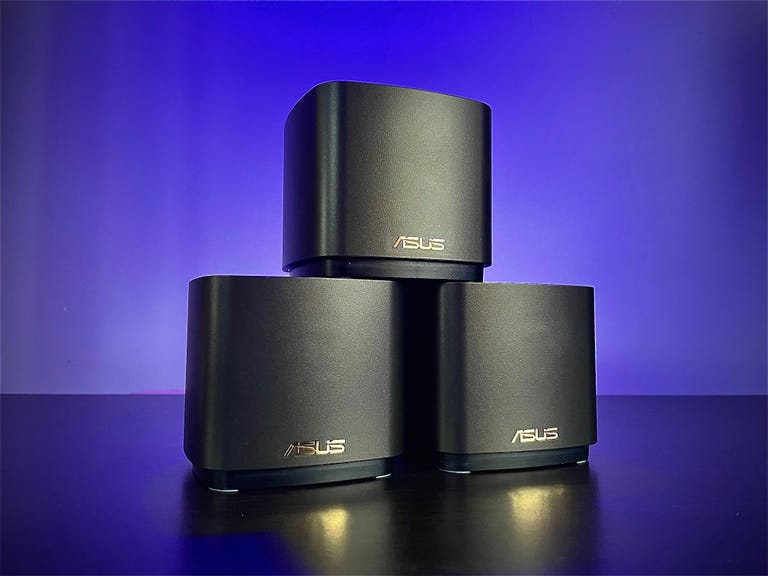
The Asus ZenWifi AX Mini costs less than other ZenWifi systems that support Wi-Fi 6, but performance was scattered in our speed tests.
Asus ZenWifi AX Mini: Also known as the ZenWifi XD4, the ZenWifi AX Mini is a pint-sized smaller sibling to the larger and more powerful ZenWifi XD6 and XT8 systems recommended above. Performance was scattered in my tests, with annoying speed drop-offs whenever I’d connect at a distance, so it isn’t as recommendable as other ZenWifi offerings.
Eero 6: Amazon’s first Wi-Fi 6 mesh router, the Eero 6 hit the market back in 2020, but it didn’t blow us away during our tests. Eero systems that followed it did a lot better in my speed tests and they offer the same smart home perks, like built-in radios for Zigbee and Thread.
Eero Pro 6: While the standard Eero 6 system was a bit underwhelming in 2020, the beefier, more powerful Eero 6 Pro left us impressed, particularly for fast average uploads and low latency. The Eero Pro 6E system that followed it is the better upgrade pick for most thanks to the addition of the 6GHz band, but if you’re skipping Wi-Fi 6E and just want a solid, tri-band Wi-Fi 6 system, this one still fits the bill.
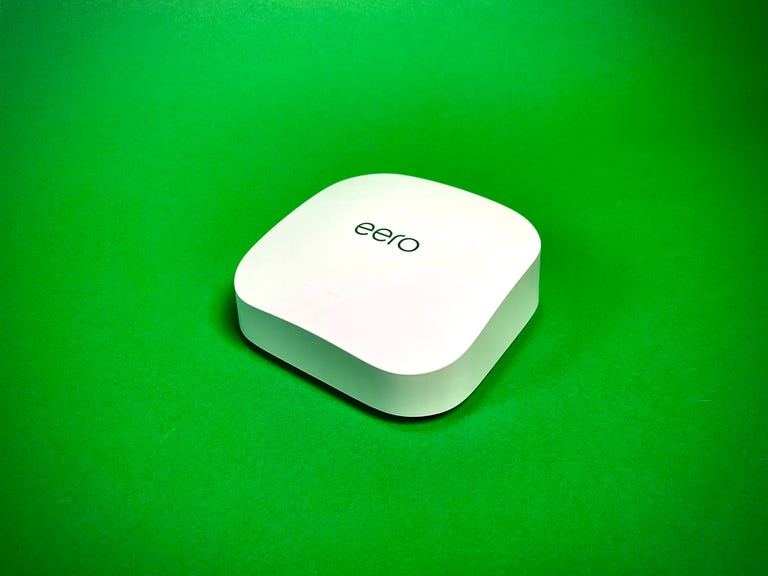
The Eero Pro 6E is a great pick for gigabit networks, but most homes would be just fine sticking with the less expensive Eero 6 Plus.
Eero Pro 6E: The Eero Pro 6E did an excellent job in our speed tests, finishing toward the top in just about every category while also delivering a noticeable speed bump to Wi-Fi 6E devices that can connect over the 6GHz band. The smaller-sized Eero 6 Plus is the better value for most households, but if you’re a Wi-Fi 6E power user with gigabit speeds at home, then upgrading to the Eero Pro 6E merits strong consideration.
Eero Max 7: It’s Amazon’s newest, largest and priciest Eero mesh system, and it adds in support for Wi-Fi 7, the new Wi-Fi standard that promises to build upon Wi-Fi 6E’s foray into the 6GHz band. In our initial speed tests, the Max 7 was capable of hitting blazing-fast speeds, but it didn’t sustain those highs throughout testing. In fact, on multiple occasions when I’d connect from the test floor’s garage, the farthest room from the main router, the system would connect me through the extender on the 2.4GHz band, which caused speeds (and the Max 7’s overall position on my leaderboard) to plummet. Worse, the system kept me on 2.4GHz even after I’d returned to the same room as the router. What’s more, when we re-ran our tests with a fancy Wi-Fi 7 test device, speeds were actually slower than what we saw on a Wi-Fi 6 or Wi-Fi 6E device. I’ll continue testing this system to see if the mesh improves, but for now, it’s not a splurge that I’d recommend.
Linksys Velop MX2000: Available in a two-pack for $150, the Linksys Velop MX2000, also known as the Velop Atlas 6, is decent enough as baseline Wi-Fi 6 mesh routers go, but you’ll find better value and faster speeds if you shop around.

The Nest Wifi Pro is one of the newest Wi-Fi 6E routers on the market. There’s a lot to like about it, but the average speeds were underwhelming among Wi-Fi 6E systems.
Nest Wifi Pro: The Nest Wifi Pro mesh router reworks the original Nest Wifi pitch by ditching the built-in Google Assistant smart speakers and adding in access to the 6GHz band via Wi-Fi 6E support. With a built-in Thread radio and robust smart home controls via the Google Home app, it’s a decent pick for smart home enthusiasts, and it was as stable a performer as I’ve seen in my speed tests. Still, those speeds were a bit lackluster, and the system also lacked backward compatibility with previous Nest Wifi and Google Wifi hardware. At $320 for a three-pack, it’s a bit expensive for such middle-of-the-road performance.
Netgear Orbi AX6000: Originally released as the Netgear Orbi 850 series, and recently updated to the 860 Series, both generations of Netgear’s flagship AX6000 mesh router offer strong performance, but I wasn’t as impressed with the system’s speeds on a gigabit network, where several systems that cost less have managed to outperform it in my tests. Even so, this is one of the most consistent mesh routers I’ve tested, with reliable speeds from test to test. If that type of steady performance is what you’re after, then it belongs high on your list.
Netgear Orbi AXE11000: The AXE11000 version of the popular Netgear Orbi router is a high-powered Wi-Fi 6E tank that leads all other routers I’ve tested in terms of its speeds to Wi-Fi 6E devices. It’s a strong performer over plain ol’ Wi-Fi 6 too, but not nearly as dominant as you might expect given that it costs $1,500 for a three-pack.
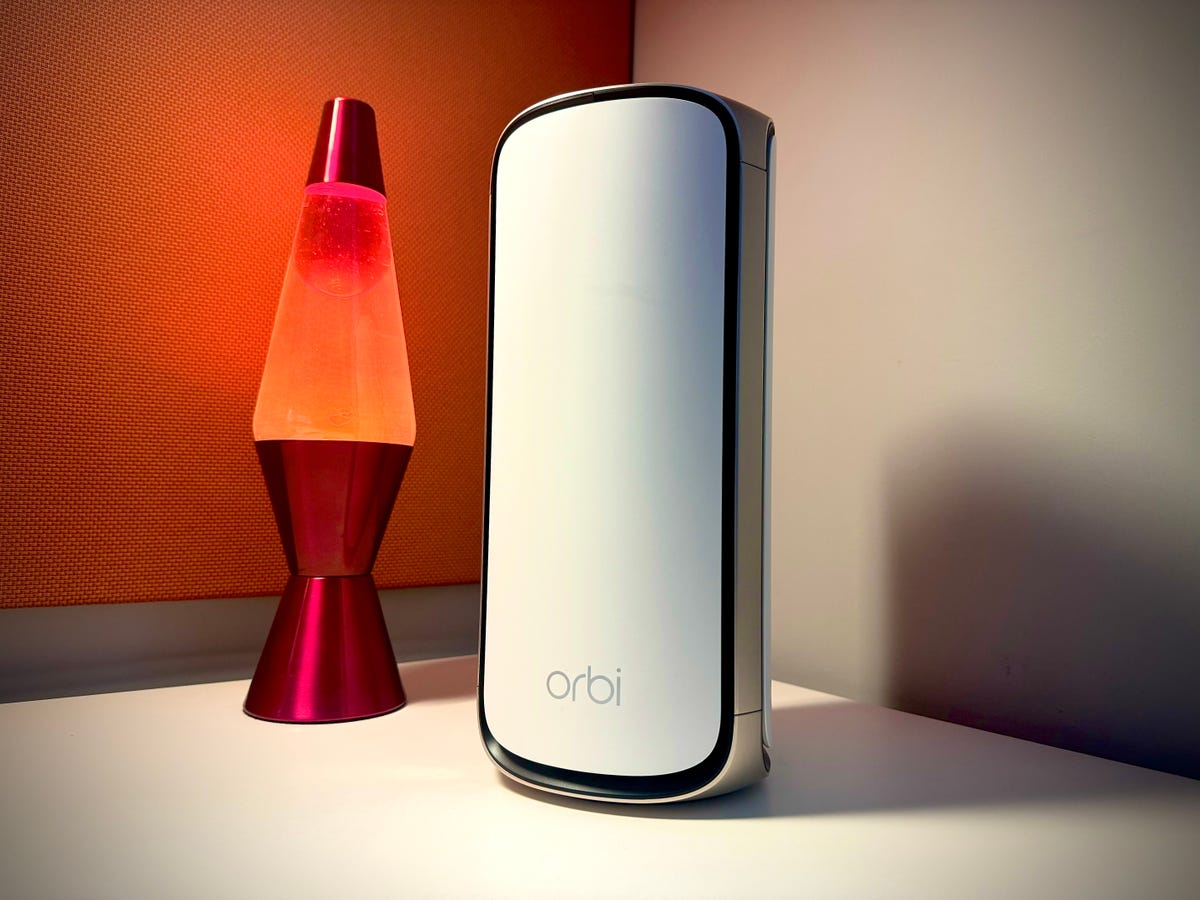
Netgear Orbi 970 Series: Netgear’s newest flagship, the 970 Series is a tower-shaped Orbi system that adds support for Wi-Fi 7, the new Wi-Fi standard that promises to build upon Wi-Fi 6E’s expansion into the 6GHz band. The system was just as speedy as expected when I tested it out — but not quite as fast with Wi-Fi 6 devices as the top-performing Asus ROG Rapture GT6. As for Wi-Fi 7 devices, we didn’t see notably better performance than Wi-Fi 6 in our initial tests, but it’s still very early for the standard. We’ll know a lot more once we’ve had a chance to test additional Wi-Fi 7 setups out, so stay tuned for updates on that front in the coming year. In the meantime, this extremely expensive system is almost certainly overkill for most households.
TP-Link Deco X4300 Pro: The Deco X4300 Pro is an impressive system that features some of the best Wi-Fi 6 speeds we’ve seen, plus multi-gig Ethernet jacks on each device. The Deco W7200 still seems like the better value for most homes, but if you’re looking for a step up from that system, put the X4300 Pro on your radar.
TP-Link Deco X55 Pro: The X55 Pro shares a lot of similarities with the Eero 6 Plus — support for Wi-Fi 6, far-reaching range, gigabit Ethernet jacks — but I lean towards Eero’s mesh system for its features like built-in Zigbee radio. The Eero 6 Plus also returned slightly faster speeds in testing. At $250, the X55 Pro is a decent value for a three-piece mesh system, but I’d put it more in “good not great” territory.
TP-Link XE75: TP-Link’s first Wi-Fi 6E mesh router, the XE75 did a decent job in our initial tests in 2022, though the system’s average upload speeds were lower than I’d expected. It’s a clear value pick and currently available in a two-pack for well under $250, so give it a look if you’re curious about Wi-Fi 6E but fearful about overspending. I’ll update this page once we’ve retested it in our lab, so stay tuned for that.
TP-Link Deco X90: With a multi-gig WAN port and a faster speed rating, the Deco X90 is a midrange upgrade pick over the Deco W7200, and it costs $280 for a two-pack. It performed well in my tests, but not enough that I’d recommend paying $100 more than the Deco W7200 for it.
Vilo: The Vilo mesh router was one of the most affordable mesh routers I had ever tested back in 2021 when devices were available for about $20 each. These days, you can snag it for a little less than $40 per mesh device, but you shouldn’t expect high speeds from a low-cost Wi-Fi 5 system like this one. In fact, it rang in with the slowest average uploads and downloads among any system I tested it against. Still, it got the job done, so if you just need something dirt cheap, speeds be damned, give it a look.
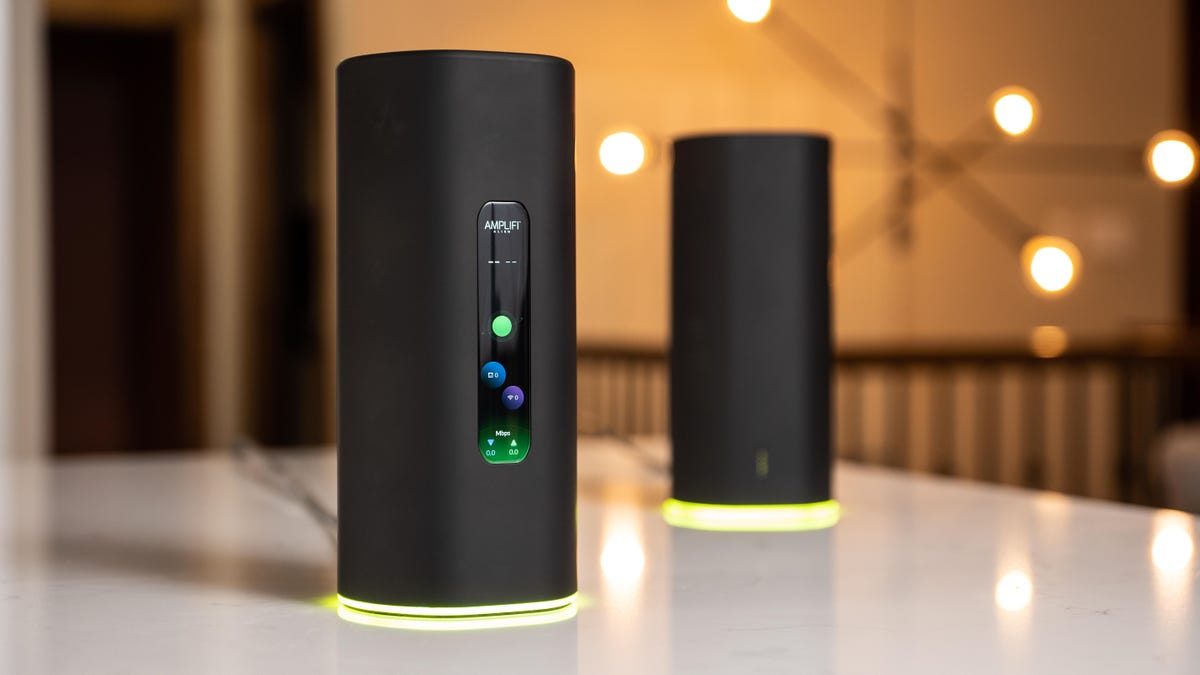
It isn’t a top performer or a value pick, but the Amplifi Alien is a great-looking Wi-Fi 6 mesh router that lets you create a VPN-style connection to your home network when you’re traveling, which is a nice, unique feature.
How to choose a mesh Wi-Fi router
Performance and value are probably the first things you’ll look for as you shop for a mesh router, but there are other factors worth taking into consideration as well. Take features, for instance. Mesh routers typically don’t come with many unique bells and whistles, but there are some standouts. The Amplifi Alien mesh router from Ubiquiti is a good example — apart from a unique-looking build, it features touchscreen controls on the front of each device, along with a feature called Teleport that lets you establish a VPN-style connection to your home network when you’re traveling. That’s a useful trick that lets you make use of your home network’s security capabilities when you’re connecting to a public Wi-Fi network.
Speaking of security, if you’re buying a new router, then it’s worth looking for one that supports the latest encryption standards. Most of the new models released in the last year or two support WPA3 for a stronger defense against things like brute-force hacking attempts; I’d want a model like that if it were me making the upgrade.
Most mesh routers are a cinch to set up, with companion apps that walk you through the process in a matter of minutes. Just plug everything in and follow the instructions.
As for setup, don’t worry too much about it, if at all. Just about every new router, mesh or otherwise, will come with a convenient companion app that’ll walk you through the setup process in a matter of minutes. From there, you’ll have simplified network controls just a few taps away, allowing you to turn a guest network on and off, manage parental controls or change your network password. Just keep in mind that router apps like these will often glean lots of data from your networking habits for marketing and ad-targeting purposes — if you’re privacy-minded, it might be worth checking the app’s privacy policy to see if you can opt out of data collection altogether.
There are a number of other factors that we take into consideration whenever we test a mesh router. Latency is a good example. I run each of my speed tests on the same server, which gives me a good, comparative look at how quickly each one is able to send and receive data. Most of the mesh routers I’m testing these days do just fine, with average latency usually coming in between 15ms and 20ms per ping, but some systems will see latency spikes when they’re routing your connection through a satellite extender. That means connecting to a mesh system at range might not be the best bet for gamers, or for anyone else particularly concerned with latency.
Something else to think about as you shop is data security and privacy. WPA3 is the newest encryption standard for web traffic, and most of the newest mesh routers on the market offer it. If you’re buying a new router of any kind at this point, that’s a standard worth prioritizing.
The bottom line on mesh routers
If your Wi-Fi is struggling to reach every room in your house, a mesh Wi-Fi system is the best solution for extending the connection. The best model for most homes is the TP-Link Deco W7200, a two-piece system that performed extremely well in our tests for around $200. The Eero 6 Plus is a three-piece system that has consistently returned solid speeds in our tests and retails for about $200. It’s not quite as fast as the TP-Link, but with an extra mesh device, it’s a better fit for larger homes.
If you want something powerful that can make the most of a gigabit internet connection, then I’d point you toward the Asus ROG Rapture GT6, which remains the fastest mesh system we’ve tested here in recent months. At $450 for a two-piece setup, it isn’t cheap, but it outperformed fancy Wi-Fi 6E and Wi-Fi 7 systems that cost hundreds more.
Mesh router FAQs
Why should I choose a mesh router instead of a regular router?
With multiple devices working together to spread a strong, usable connection across a larger space, a mesh router is usually better than a single, stand-alone router, especially in medium to large homes. In a home or apartment that’s smaller than 1,500 square feet or so, a mesh router might be more hardware than you need.
Does mesh Wi-Fi replace your router?
Yes; a mesh router will replace your existing router.
What’s the difference between a mesh Wi-Fi system and a Wi-Fi extender?
While both aim to spread your Wi-Fi connection around your home more completely than a basic router, a mesh Wi-Fi system is more effective at doing it. Mesh systems are complete replacements for your Wi-Fi router, while an extender simply re-broadcasts your existing Wi-Fi signal in another part of the home. Your devices won’t automatically switch between the two Wi-Fi broadcasts, so you’ll have to manually switch every time you want to use the Wi-Fi upstairs. With a mesh system, your devices will automatically connect to the closest node.
How long do mesh routers last?
A good router, mesh or otherwise, should last at least five years, if not longer. The key thing is to watch for regular firmware updates from the manufacturer to keep your network security up to date. If your router isn’t receiving those, then it’s probably a good idea to start looking for a new one.
Do you lose speed with mesh Wi-Fi?
Just like with a regular router, your mesh Wi-Fi speeds will dip as you move farther away from whichever device in the setup is wired to your modem. That said, the satellite extenders will help boost speeds at range by providing a more reliable connection back to the modem-connected router. The end effect is that your speeds should be more consistent throughout your home, with fewer (if any) dead zones where coverage drops out altogether.
What are the disadvantages of a mesh network?
Mesh routers are good for offering consistent speeds throughout your entire home, and the best of the bunch is capable of hitting gigabit speeds. Single-point, stand-alone routers usually cost less than mesh routers with comparable specs, so they’ll typically offer better top speeds for the price.

